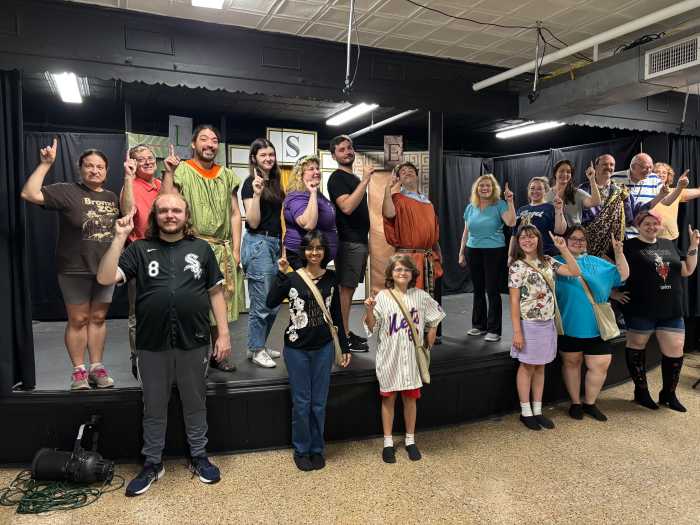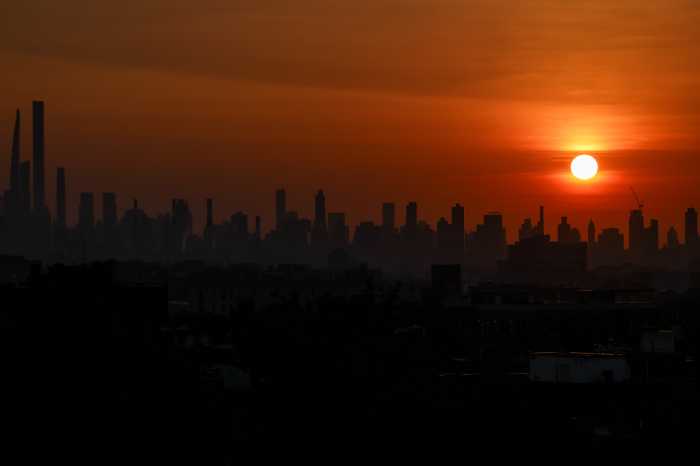By Tammy Scileppi
Folks who have met Marty Mayol of Marty’s Camera Repair call him a magician. He knows how to make all kinds of broken cameras work again. Even antique models that are over 100 years old.
Standing behind the counter of his cluttered second-floor workshop and camera “museum,” located at 71-25 Austin St. in Forest Hills, just a few blocks from his apartment, Marty reminisced about the old days of manual cameras and admitted that after 17 years, he still enjoys schmoozing with customers and photographers. He also mentioned that he has been working with schools in the metro area, teaching students how to use manual cameras.
There were vintage cameras, lenses and parts everywhere in the workshop. On the counter, in a showcase, in boxes, and on shelves. Marty is part of a generation of old-time craftsmen who offered specialized skills and took pride in their work. But guys like him are no longer in high demand.
The digital craze has transformed the entire photographic field, and it’s hard to keep up with state-of-the-art changes when they happen in the blink of an eye.
Since iPhones and Androids came on the scene, everybody has become a photographer and the average person doesn’t even need a camera to take amazing, or even good, photos. No light, zoom or distance adjustments; no fussing with all that confusing stuff people had to worry about back in the day, in order to take a decent picture. You just point and shoot…instant gratification.
But many photographers are bucking that trend. They like taking photos the old-school way and seem intrigued with the wide variety of vintage cameras out there. Plus, those cameras, in addition to taking great pictures, make great collectibles. It’s no wonder. Before going digital, cameras were mechanical wonders. It took a while to figure them out and folks marveled at the new “technology.”
Pointing to a showcase filled with an array of vintage cameras, Marty said he preferred the older models to anything that new technology had to offer. “Those cameras, you had to adjust the speed, the F stop, the light. Today, the camera will do everything,” he said.
An avid photographer and history buff, Marty was excited to show off his collection of special models. There were just a few that he truly prized: The Nikon F1, F2, and F3 were his favorites. And all were in working condition.
Made of heavy metal, those models were considered top of the line for professionals during the 60s, 70s and 80s and are still used today. Marty demonstrated and explained the motor drive feature, which allowed photographers to take quick, consecutive shots for sports, etc.
Then he took out the crème de la crème of his collection: A beauty that was made over a century ago in Rochester, N.Y., and which Marty said still worked. Marty recalled that a woman brought it in two years ago. She found it while cleaning the attic and it had belonged to her grandmother, who was a photographer.
The older-is-cooler trend seems to go hand in hand with a yearning for a simpler time, especially among millennials who love to scour thrift shops and flea markets for vintage finds and have a passion for decorating with, collecting and gifting such items from the past as typewriters and record players.
That nostalgic yen is quite evident in the photographic world. Over the past several years there has been a resurgence in shooting film photos.
It turns out that film pics really do look different from digital images. Before high-resolution digital images, you had to choose the right film size, which would determine the resolution of your final image. Not too long ago, most people used 35mm cartridges. You can still get those, along with APS film, which is smaller than 35mm, as well as medium format; even sheet film is still available.
For those who really want to go retro, there are manual-focus cameras. It’s an entirely different experience, like driving automatic vs. manual.
The stereo camera is another option. In the Fifties, stereo cameras were used every day by the average person. By taking two pictures simultaneously, the camera simulates the way we actually see and therefore creates the 3D effect when viewed.
Yet another fascinating gem was an actual James Bond-type miniature Russian spy camera, that was used during the Cold War. Marty said he had fixed it and amazingly, it still worked. He compared it to a miniature made-in-occupied-Japan spy camera, made between 1947 and 1952.
It’s surprising that before compact pocket film cameras came on the scene, so many camera models—even those manufactured in the 80s—were made from heavy metal. “Drop a digital camera today, and you can forget about it, it’s plastic,” Marty noted.
As the interview drew to a close, it turned out that Marty was getting ready to move to another location, 60-18 Fresh Pond Rd. in Maspeth. He said he would be doing repairs at Cambridge World.
But his commitment to vintage cameras will remain, and the many examples of those cameras that he has collected will help keep an important part of photography’s history alive.




































